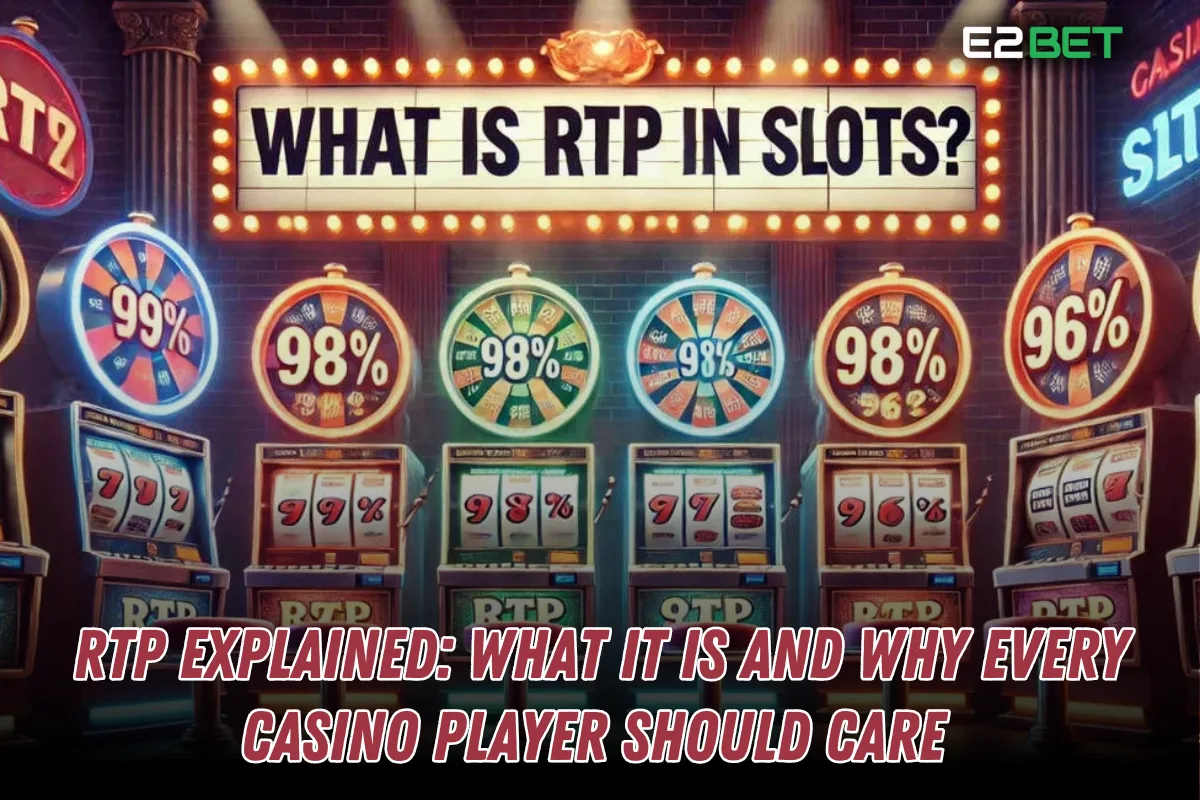RTP Explained, Ever wonder why you win or lose at an online casino? It all comes down to RTP—Return to Player. Whether spinning slots or strategizing in blackjack, understanding RTP is your secret weapon for better gameplay. But what does RTP mean in gambling, and why should it matter to you? Let’s explore everything you need to know about RTP and how it impacts your casino experience.
What is RTP?
Return to Player, or RTP, is the proportion of total wagers that a casino game is intended to reimburse players over time. For example, a slot machine with an RTP of 95% means that, on average, players will get back $95 for every $100 wagered. Knowing this can help you make informed decisions when selecting games, especially when looking for high RTP slots or table games like blackjack.
Why Every Player Should Know About RTP
RTP isn’t just a random statistic—it’s the key to understanding how casino games work. High RTP games can offer better long-term payouts, while low RTP slots often come with big jackpots but less frequent wins. Understanding RTP is non-negotiable if you want to maximize your chances of winning.

Understanding RTP
What Does RTP Stand For?
The code name for RTP is “Return to Player.” It is a mathematical indicator of the proportion of bets that players eventually receive back from a game.
How RTP Is Calculated
Here’s a simple formula to understand RTP:
RTP is equal to (total amount paid out / total amount returned to players) x 100.
For instance, if players bet $1,000 on a game and win back $950, the RTP is 95%. This calculation happens over thousands or even millions of rounds, so while it’s useful, it doesn’t guarantee short-term results.
Types of RTP
Theoretical RTP vs. Actual RTP
Theoretical RTP is the advertised percentage, while actual RTP reflects the returns players experience in the short term. Like predicting the weather, theoretical RTP gives an idea of what to expect, but actual results may vary.
Game-Specific RTP
Different games come with varying RTP values:
- Slots: RTP ranges widely, from 85% to 99%. Popular high RTP slots include Mega Joker (99%) and Blood Suckers (98%).
- Table Games: Blackjack offers an impressive RTP of over 99% when played with an optimal strategy.
- Live Dealer Games: RTP for live games like roulette and baccarat generally aligns with their digital counterparts.
RTP in Practice
High RTP vs. Low RTP Games
High RTP games provide better long-term returns, making them ideal for cautious players. Low RTP games, like progressive slots, might have lower percentages but often feature massive jackpots. Balancing RTP with your goals is key—do you prefer steady wins or aiming for a life-changing payout?
Volatility vs. RTP
Volatility adds another layer to game selection. High-volatility games, like some low RTP slots, can lead to big wins but come with higher risks. On the other hand, low-volatility games offer consistent payouts, perfect for those who want a steadier gaming experience.
How RTP Impacts Your Winnings
While RTP affects your long-term returns, it doesn’t guarantee short-term success. Think of RTP as a marathon, not a sprint—it helps you understand the big picture, but luck plays a big role in the moment.
Why RTP Matters
RTP and Casino Transparency
Casinos that publish RTP values demonstrate fairness and build trust. Players can feel confident that games are not rigged, thanks to rigorous testing by independent authorities. Always choose online casinos that provide verified RTP statistics.
Choosing Games Based on RTP
Selecting the right game can make or break your experience. Look for games with high RTP percentages, especially if you’re a beginner. For instance, blackjack offers a player-friendly RTP, while certain slots like Starburst combine high RTP with low volatility, making them a safe bet for new players.
House Edge vs. RTP
The two sides of the same coin are house edge and RTP. If a game has a 95% RTP, its house edge is 5%. Understanding this balance helps you manage expectations and make smarter decisions when placing bets.
Tips and Strategies
Maximizing Your Casino Experience with RTP
- Set a Budget: RTP helps you understand the potential return, but managing your bankroll is just as important.
- Pick High RTP Games: Focus on games with an RTP of 96% or higher for better odds.
- Understand Volatility: Pair RTP with volatility to choose games that match your style.
Top Games with the Best RTP
Here are some top choices for high RTP games:
- Slots: Mega Joker (99%), Blood Suckers (98%)
- Table Games: Blackjack (99.5%), Baccarat (98.94%)
- Live Games: European Roulette (97.3%), Live Blackjack (99%)
Conclusion
Understanding RTP is a game-changer for any casino player. It helps you pick the best games, manage your bankroll, and set realistic expectations. While RTP won’t guarantee wins, it gives you the knowledge to make smarter decisions. So next time you head to an online casino, let RTP guide you—it might just be your best bet!
FAQs
Q1. What does RTP mean in gambling?
Ans: “Return to Player,” or RTP for short, is the percentage of money that a game gives back to players over time.
Q2. Is a higher RTP always better?
Ans: Not always. While high RTP games offer better long-term payouts, low RTP games often feature bigger jackpots.
Q3. How can I determine a game’s RTP?
Ans: RTP values are usually displayed in the game’s information section or the casino website.
Q4. Does RTP apply to live casino games?
Ans: Yes, live games like blackjack and roulette have RTP percentages, often similar to their digital versions.
Q5. Can casinos manipulate RTP?
Ans: Licensed casinos cannot manipulate RTP, as games are tested and regulated by third-party authorities.